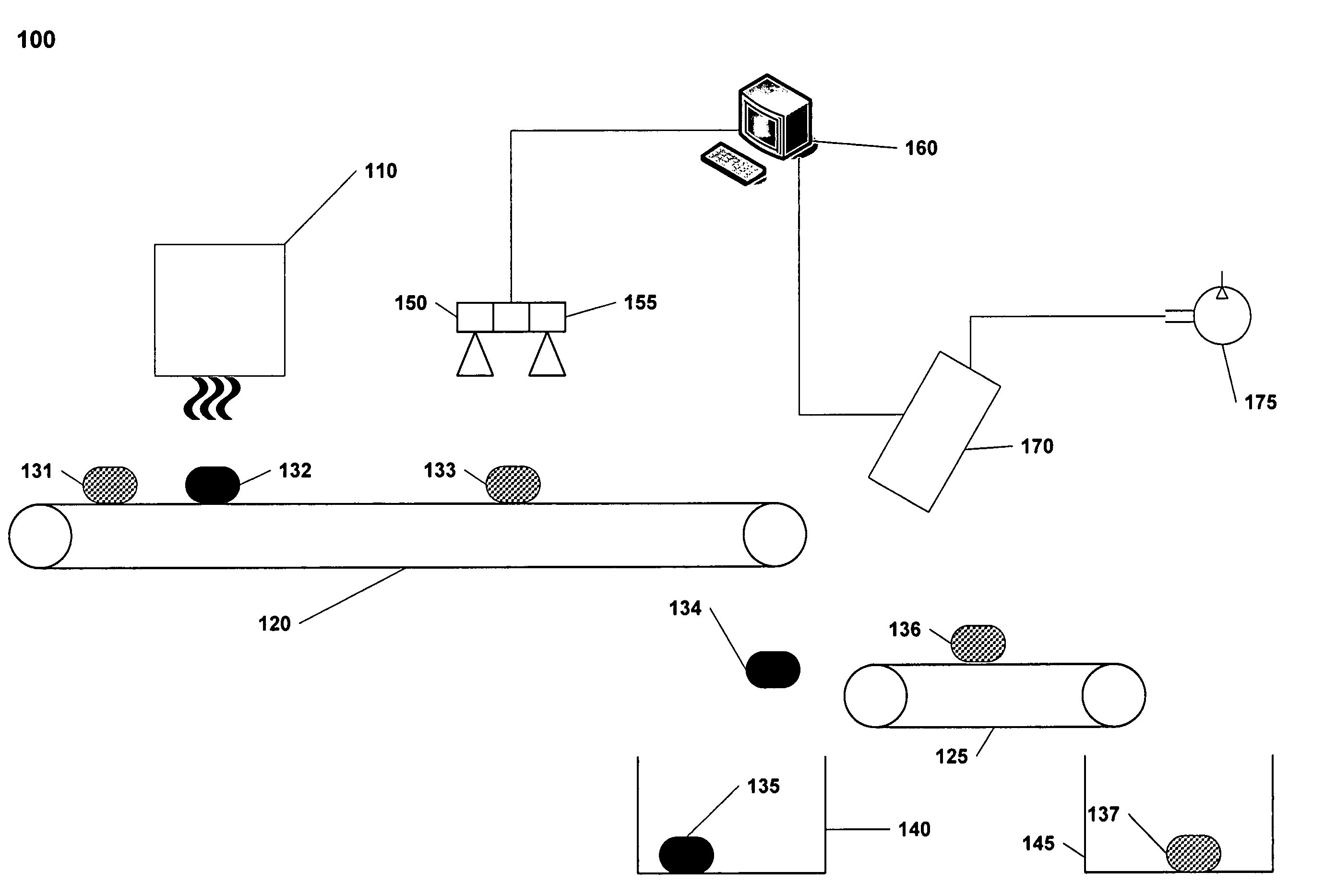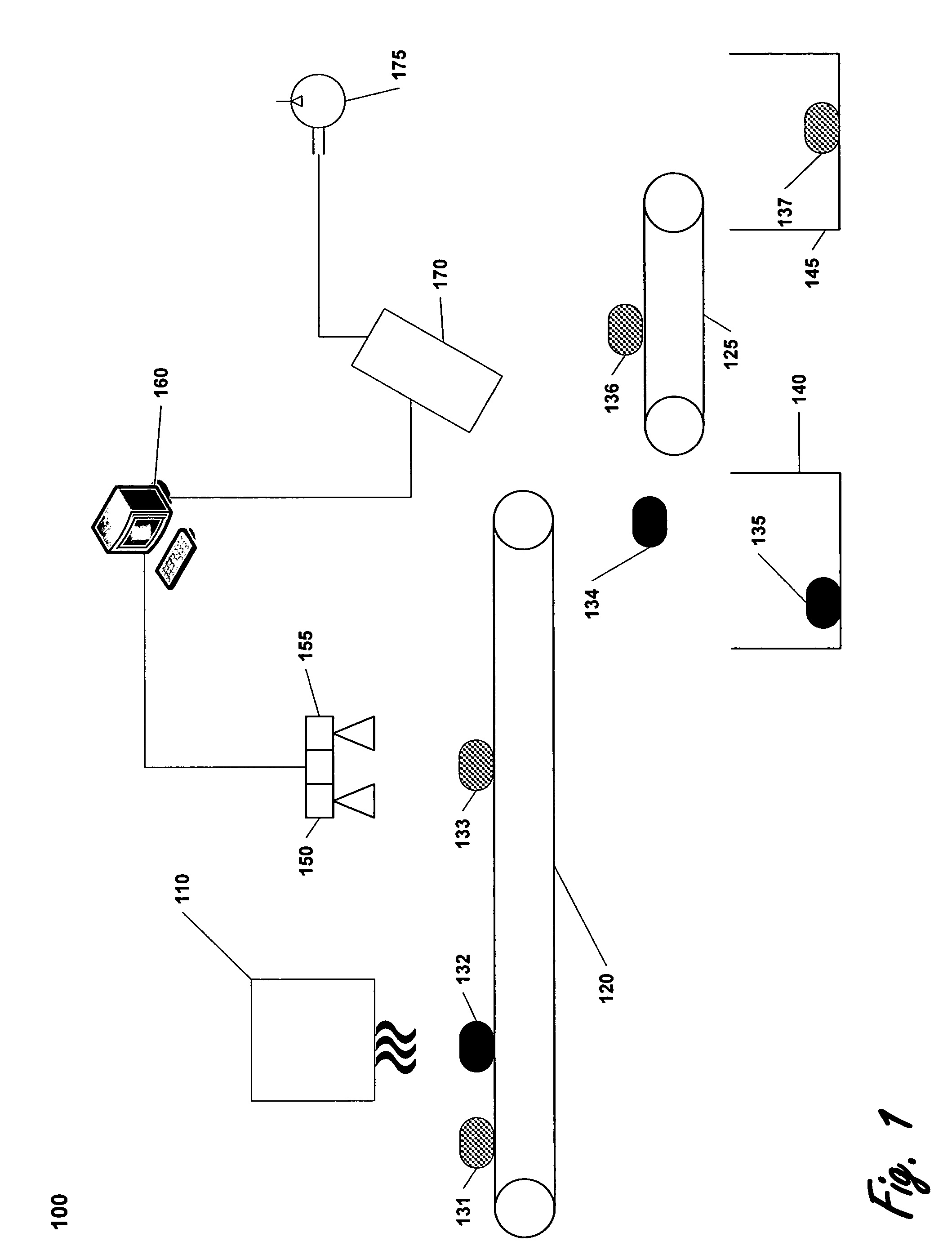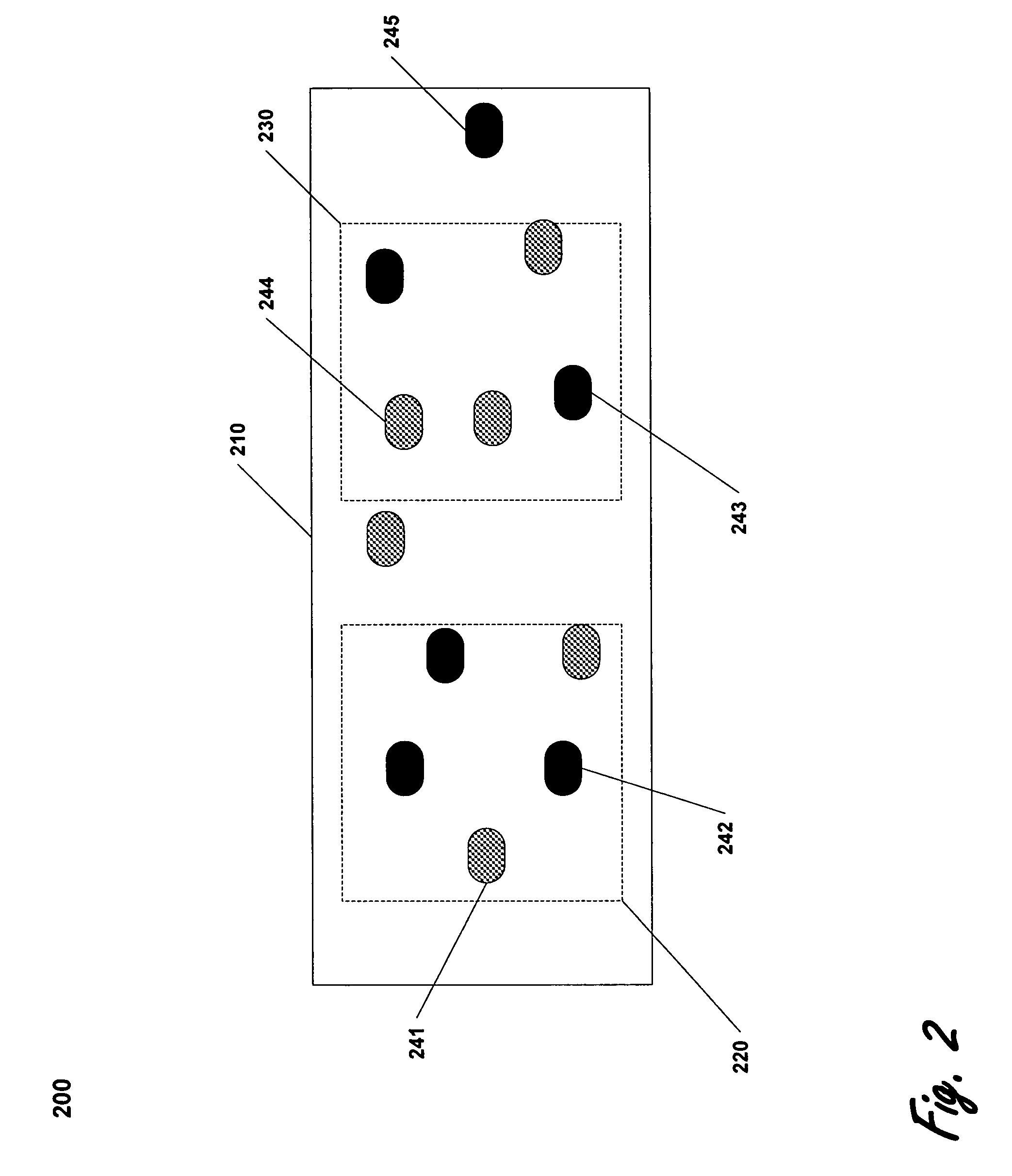System and method for sorting dissimilar materials
a technology of dissimilar materials and systems, applied in the direction of sorting, solid separation, etc., can solve the problems of inability to achieve cost-effective methods for effectively sorting waste streams, inability to meet the needs of non-ferrous materials, and inability to meet the needs of large-scale industrial production
- Summary
- Abstract
- Description
- Claims
- Application Information
AI Technical Summary
Benefits of technology
Problems solved by technology
Method used
Image
Examples
Embodiment Construction
[0020]Exemplary embodiments of the present invention provide systems and methods for sorting dissimilar materials, such as sorting plastics from wood, foam, or rubber. These systems and methods employ either dielectric heating or fluorescent dye absorption characteristics of materials to distinguish the materials. The systems and methods may employ differential dielectric heating and thermal imaging to sort wood, rubber, and foam, from plastic, metals, and other materials that do not undergo dielectric heating. Similarly, systems and methods may employ the greater liquid absorption properties of wood, rubber, and foam as compared to plastic. The dissimilar materials are subjected to fluorescent dye and carrier liquid, that is differentially absorbed by objects. Fluorescent imaging can be used to distinguish the materials. In either case, a computer-controlled system can be used to sort material types based on an evaluation of the thermal or fluorescent image.
[0021]FIG. 1 depicts an ...
PUM
| Property | Measurement | Unit |
|---|---|---|
| wavelength | aaaaa | aaaaa |
| frequency | aaaaa | aaaaa |
| distance | aaaaa | aaaaa |
Abstract
Description
Claims
Application Information
 Login to View More
Login to View More - R&D
- Intellectual Property
- Life Sciences
- Materials
- Tech Scout
- Unparalleled Data Quality
- Higher Quality Content
- 60% Fewer Hallucinations
Browse by: Latest US Patents, China's latest patents, Technical Efficacy Thesaurus, Application Domain, Technology Topic, Popular Technical Reports.
© 2025 PatSnap. All rights reserved.Legal|Privacy policy|Modern Slavery Act Transparency Statement|Sitemap|About US| Contact US: help@patsnap.com



